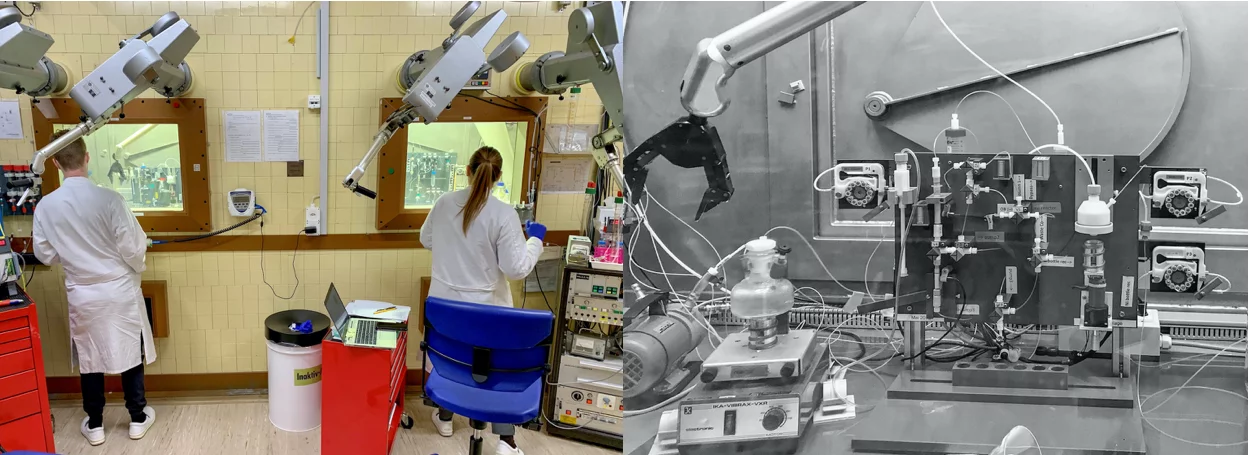TATTOOS (Targeted Alpha Tumour Therapy and Other Oncological Solutions), an initiative spearheaded by the Laboratory of Radiochemistry and Center for Radiopharmaceutical Sciences, envisages the use of part of the high-intensity high-energy proton beam from the ring cyclotron at PSI's HIPA facility, in conjunction with dedicated high-power spallation targets for the production of radionuclides. As a result, the primary beam has to be split using a beam splitter and the separated part guided to a shielded area inside a new building. There, the beam is impinging on the high-power target which is heated up by the beam to temperatures above 2500 °C. At lower beam intensities the target can be heated by additional Joule-heating with high electrical currents. The volatile atoms produced in the target material in non-specific spallation processes effuse towards the ionizer part of the target heated separately by electric Joule-heating, thus maintaining temperatures above 2500 °C. Nonselective surface ionization or selective laser resonance ionization are envisaged to produce ions inside the ionizer. These ions are extracted by high voltage fields and guided towards the online mass separation using a dedicated dipole magnet. The mass-separated products are collected in an ion sampling stage within a lead-shielded-cell complex. Following dedicated radiochemical separations of the desired nuclide from isobaric side bands and chemical impurities (in the TATTOOS shielded-cell complex), the product will be radionuclidically and chemically pure enough to produce radiopharmaceuticals either onsite at the Center for Radiopharmaceutical Sciences or at UZH facilities towards medical applications. The respective radiopharmaceuticals will be made available at unprecedented activities, enabling first clinical studies throughout Switzerland, with particular focus on the therapy centres in cantons Aargau, Zurich, Bern and Basel. Should the half-life allow and the yield be sufficient, the radiopharmaceuticals could also be shipped abroad. The initial operation will be dedicated to the use of Ta as spallation material to produce the neutron-deficient Tb sisters 149Tb, 152Tb and 155Tb. At a later stage, the radionuclide portfolio can be expanded towards other alpha-decaying nuclides using uranium carbide (UCx) or Thorium carbide (ThCx) as target materials
The EU initiative, SAMIRA (Strategic Agenda for Medical Ionising Radiation Applications), is an EU action plan to secure medical radionuclide supply and technological innovation and development in Europe. A document in this regard was released (https://ec.europa.eu/energy/sites/default/files/swd_strategic_agenda_fo…), highlighting the need to have more radionuclide production facilities built in Europe. The plan will “improve EU coordination, ensure that radiological and nuclear technologies continue to benefit the health of EU citizens, and contribute to the fight against cancer and other diseases” (https://ec.europa.eu/commission/presscorner/detail/en/IP_21_265). This Action Plan is the first follow-up to Europe's Beating Cancer Plan, adopted by the Commission on 3 February 2022. The construction and implementation of TATTOOS will be a big step from Switzerland towards fulfilling the SAMIRA initiative.
